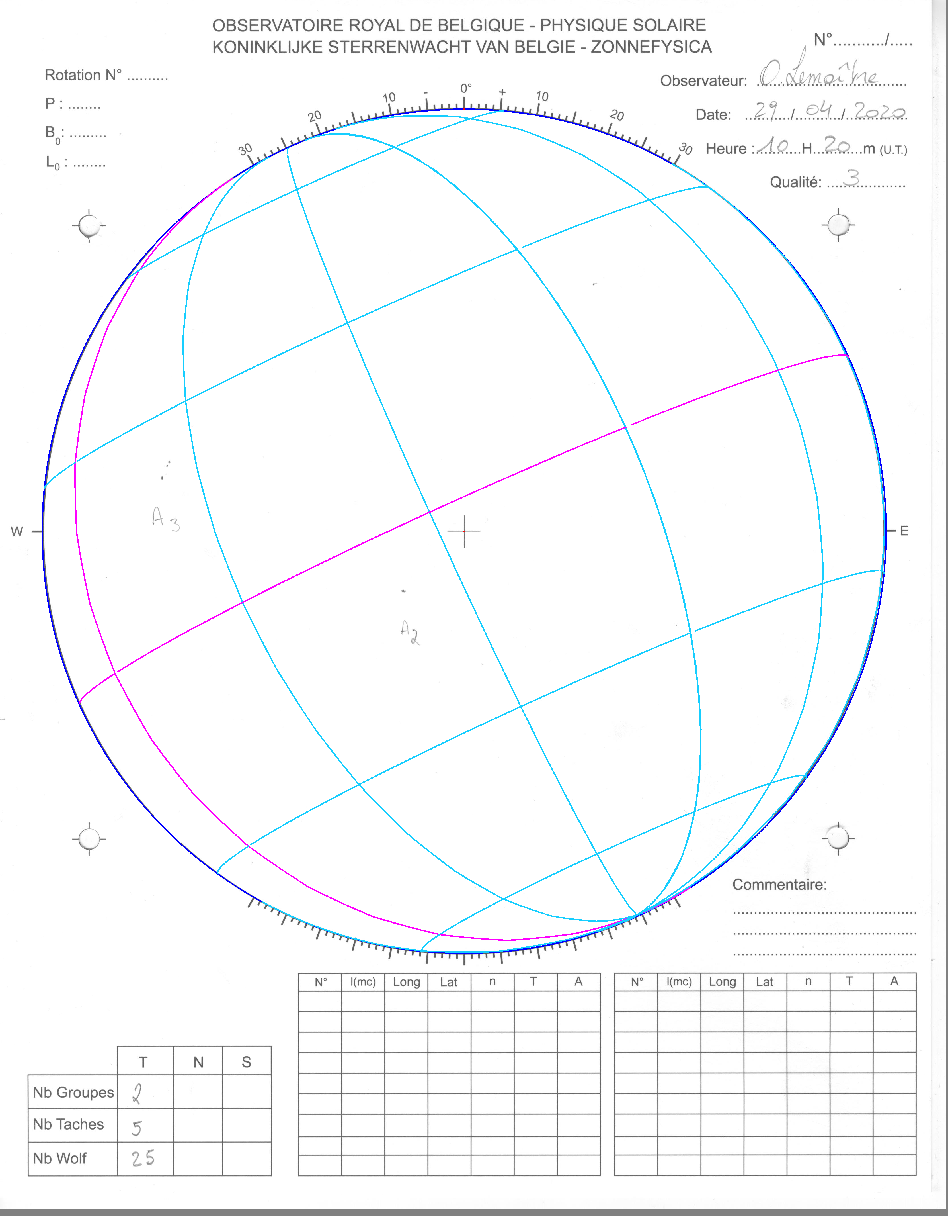Sunspot counts done worldwide are collected on a daily basis by SILSO World Data Center since 1981. These observations are used to calculate the international index for solar activity: the sunspot number. These series of numbers form the key data for the International Solar Cycle 25 Prediction Panel, supported by NASA and NOAA and in which SILSO is participating.
Frederic Clette, head of SILSO: “We track the long-term evolution of the sunspots and the extrema of all cycles. This is one of the busiest times, with a burst of requests from all kinds of users: solar physicists, of course, but also geophysicists, space engineers, radio amateurs, and also curious citizens from all over the world. When a cycle reaches the minimum, everybody wants to know exactly when the maximum and minimum of the next solar cycle will occur.”

This is a sunspot drawing made on 29 April, 2020 with the solar telescope at Uccle, Belgium. The sunspot group ‘A3’ belongs to the new solar cycle, while ‘A2’ belongs to the old one.
Frederic Clette: “We keep a detailed record of the few tiny spots that mark the onset and rise of the new cycle. These are the diminutive heralds of future giant solar fireworks. Of course, the Sun has its own pace that we cannot speed up. But, we can try to predict when the Sun is truly waking up again!”
More on http://sidc.be/silso/





